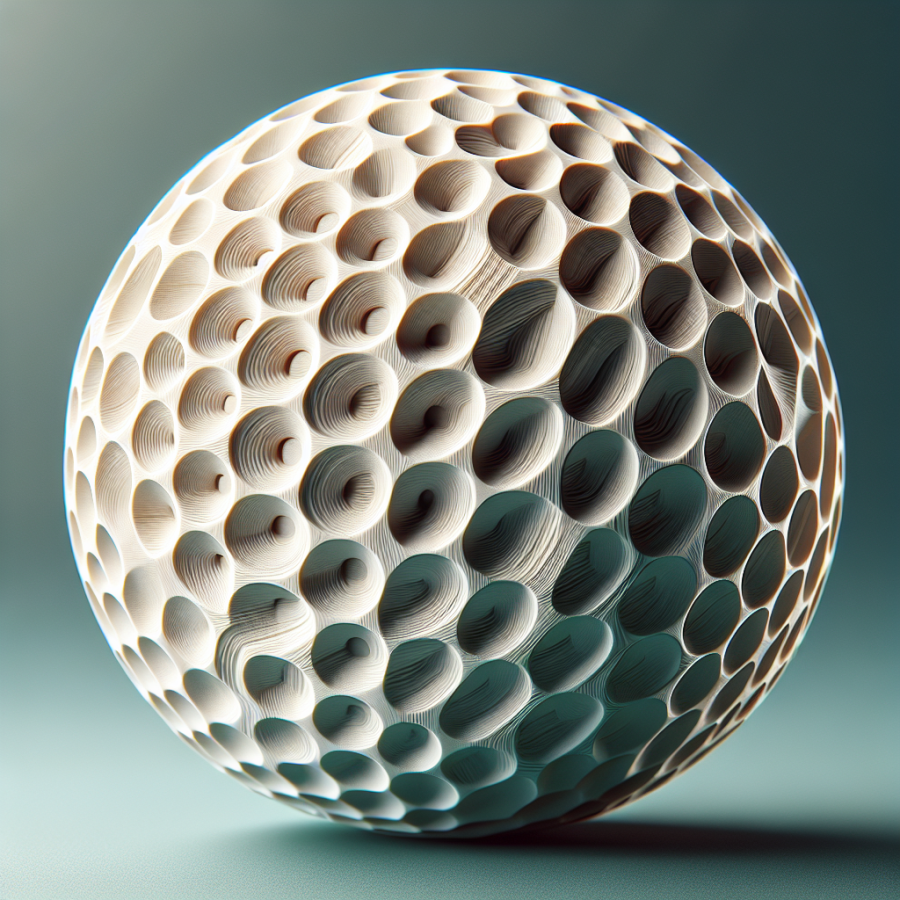Understanding the Composition of a Golf Ball
Golf balls are arguably the most critical equipment for golfers. Misconceptions about the structure and composition of golf balls, including the mistaken belief that they are hollow, are common. The truth, however, is far more complex and fascinating.
The Components of a Golf Ball
Contrary to common belief, golf balls are not hollow. Standard golf balls consist of three primary components: the core, the cover, and the dimples.
The Core
The core of a golf ball is the innermost part, around which other layers are built. It is typically made from rubber and is designed to be highly resilient, giving the golf ball its bounce effect. In two-piece balls, the core is typically hard with a high compression rate for long-distance shots. Meanwhile, the core's in multilayered balls are usually softer, with a low compression rate, for better control and spin.
The Cover
The cover is the exterior layer of the golf ball, which comes into direct contact with the golf club. It significantly impacts the ball's performance, affecting its durability, feel, and control. Most covers are made from either Surlyn or urethane. Surlyn covers are more durable and better for high-handicap players, as they provide distance but less spin. Meanwhile, urethane covers are softer with more spin and control, making them suitable for low-handicap players.
The Dimples
One of the distinct features of a golf ball is its dimples. They play a crucial role in determining the ball's lift and drag. When the golf ball is in flight, air flows over the dimples, reducing the drag and allowing the ball to fly further. The number of dimples on a golf ball can range from 300 to 500, depending on the model and brand. Typically, more dimples correlate to a smoother and longer flight.
Additional Layers
Aside from the primary components, some golf balls feature additional layers between the core and the cover. These extra layers are targeted towards advanced players and enhance the ball's performance characteristics, providing an added level of control and spin for precise shots.
In summary, golf balls are far from hollow. They are sophisticated pieces of equipment designed with multiple layers and components to enhance performance. Each element serves a purpose, from the rubber core that provides resilience, the cover that influences control, to the dimples that maximize distance covered.
Read also:
Aiming High: The Thrill of Precision in Target Sports
Misconceptions and Truths: Are Golf Balls Really Empty Inside?
One common misconception people have about golf balls is that they are hollow or empty inside. However, this is far from the truth. In fact, the internal structure of a golf ball is quite sophisticated and plays a vital role in determining the performance of the ball.
The exact design and materials used in golf balls can vary greatly depending on the manufacturer and the intended level of play. Nonetheless, the fundamental structure remains the same. Contrarily to the popular belief, golf balls are not hollow. They consist of several layers beginning with a small, solid rubber core. This solid core is surrounded by one or several more layers of different materials and then coated with an outer layer, usually made from urethane or surlyn.
The core of the golf ball is typically made of rubber and is filled with a liquid or gel. This core is designed to be highly responsive, providing a significant part of the ball's overall distance and spin. Contrary to the myth, the core is not hollow but filled with either a high-energy acrylate or resin processed with a rubber compound and heated under high pressure to form a hard, solid interior.
Surrounding the core are one or more layers of material designed to control the ball's spin rate and increase its distance. These layers are often made from unique blends of ethylene-based ionomers that provide a combination of soft feel and high performance.
The final piece of the puzzle is the outer cover, which is designed to offer control and a soft feel around the greens. The materials used to make this outer layer can dramatically affect how the ball behaves on impact with the clubface, resulting in either a lower, piercing ball flight or a higher, more controlled shot. Despite its appearance, this outer layer is not hollow but is made from a durable material that can withstand repeated impacts.
However, it's critical to note that despite the technical design of a golf ball, its performance ultimately depends on the golfer's skill level. No matter the internal composition of the golf ball, it's the golfer's swing, power, and precision that decide the distance and trajectory of the ball.
So, the next time you hear someone saying that golf balls are empty or hollow inside, you can confidently debunk this myth by explaining that golf balls are far from empty. Instead, they have a complex multi-layer structure that contributes significantly to their performance on the golf course.




